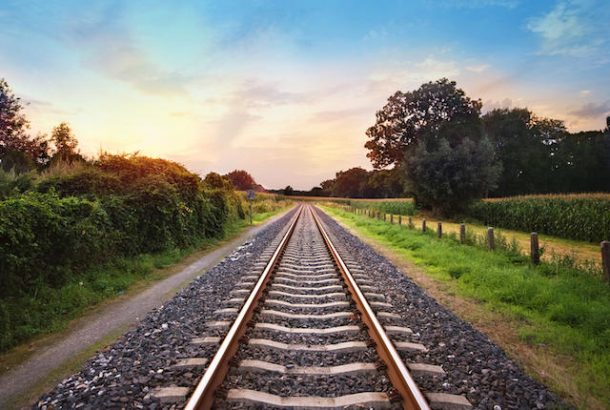Have you ever wondered why the rail side-tracks are covered in crushed stones? These crushed stones, called ballast, are used to hold the wooden cross ties that in turn keep the rails in place.
The narrow steel tracks laid for railway can be affected by a number of factors like the expansion and contraction due to heat, vibration and movement of the ground, precipitation buildup owing to poor weather conditions, and weed and plant growth. Although the rail tracks are not used continuously, when a freight locomotive moves over them, these railways support a weight of up to one million pounds.

When the engineers encountered the problem of laying down the railway tracks more than 200 years ago, they hit upon an ingenious solution which is being used nearly as such since then!
First, a foundation is built to raise the railway track high enough to avoid flooding. Ballast is deposited atop this foundation. A row of 8.5-feet-long, 9-inces-wide, and 7-inches thick wooden beams is laid above the layer of crushed stones. The railroad ties, also called the cross ties or sleepers, are usually made out of hickory or oak and coated with creosote for weather protection. The modern railway tracks are also experimenting with alternatives to wooden cross ties like plastic, concrete, and steel sleepers. Around 3249 wooden beams are laid per mile.
The ballast is dumped all around the beams. The wooden beams are kept locked in place by the sharp-edged stones. If the pebbles were used, the smooth, rounded corners would make it easier for the wooden beams to slide over.


David S. Rose further explains the significance of the crushed stone on the rail side tracks as:
“The ballast distributes the load of the ties (which, in turn, bear the load of the train on the track, held by clips) across the foundation, allows for ground movement, thermal expansion and weight variance, allows rain and snow to drain through the track, and inhibit the growth of weeds and vegetation that would quickly take over the track.”
Next, the hot-rolled steel rail tracks are laid atop the cross ties, and their ends are welded together via fishplates. The modern railways may forgo the fishplates and weld the tracks continuously.
One may question why the tracks are not bolted down to the wooden cross ties? Well, the expansion or contraction of the rail track due to heat will break or bend the fixed steel railway line. Thus, the rail tracks are attached to the railroad ties via clips that allow them to expand and contract while holding them in place.
Pretty cool, isn’t it?



really knowledgeable info next time when even i travel on rail i would like to tell my friends this info thank for article
boner